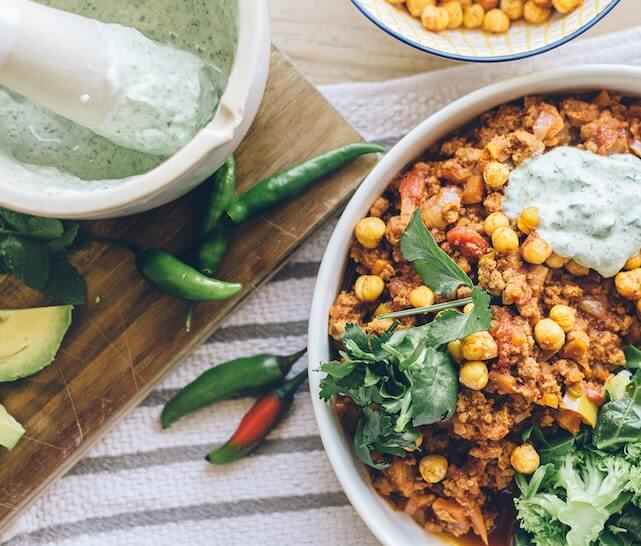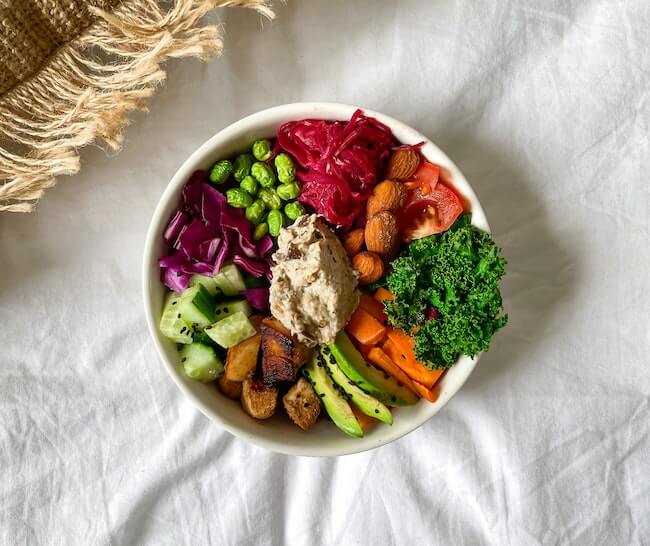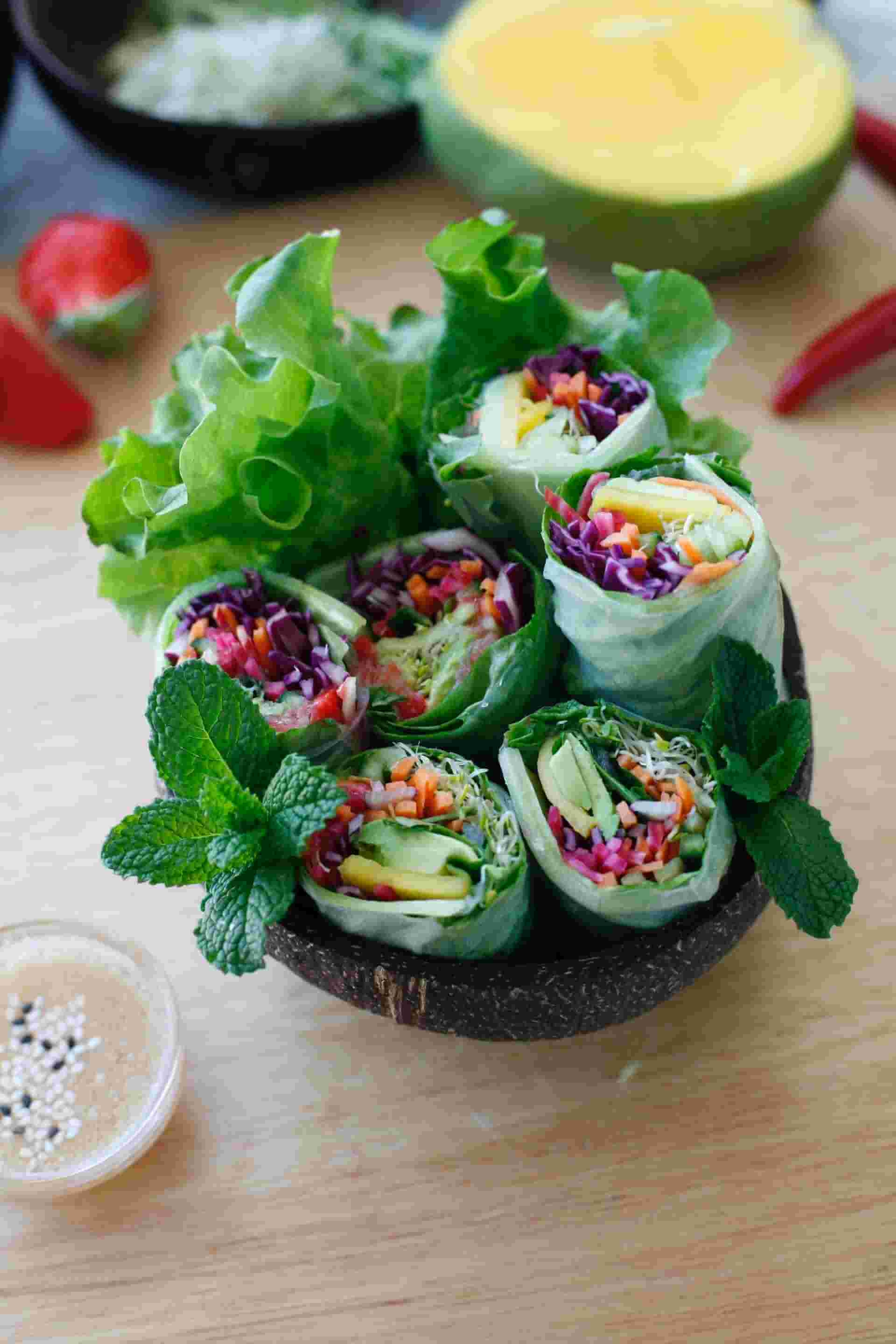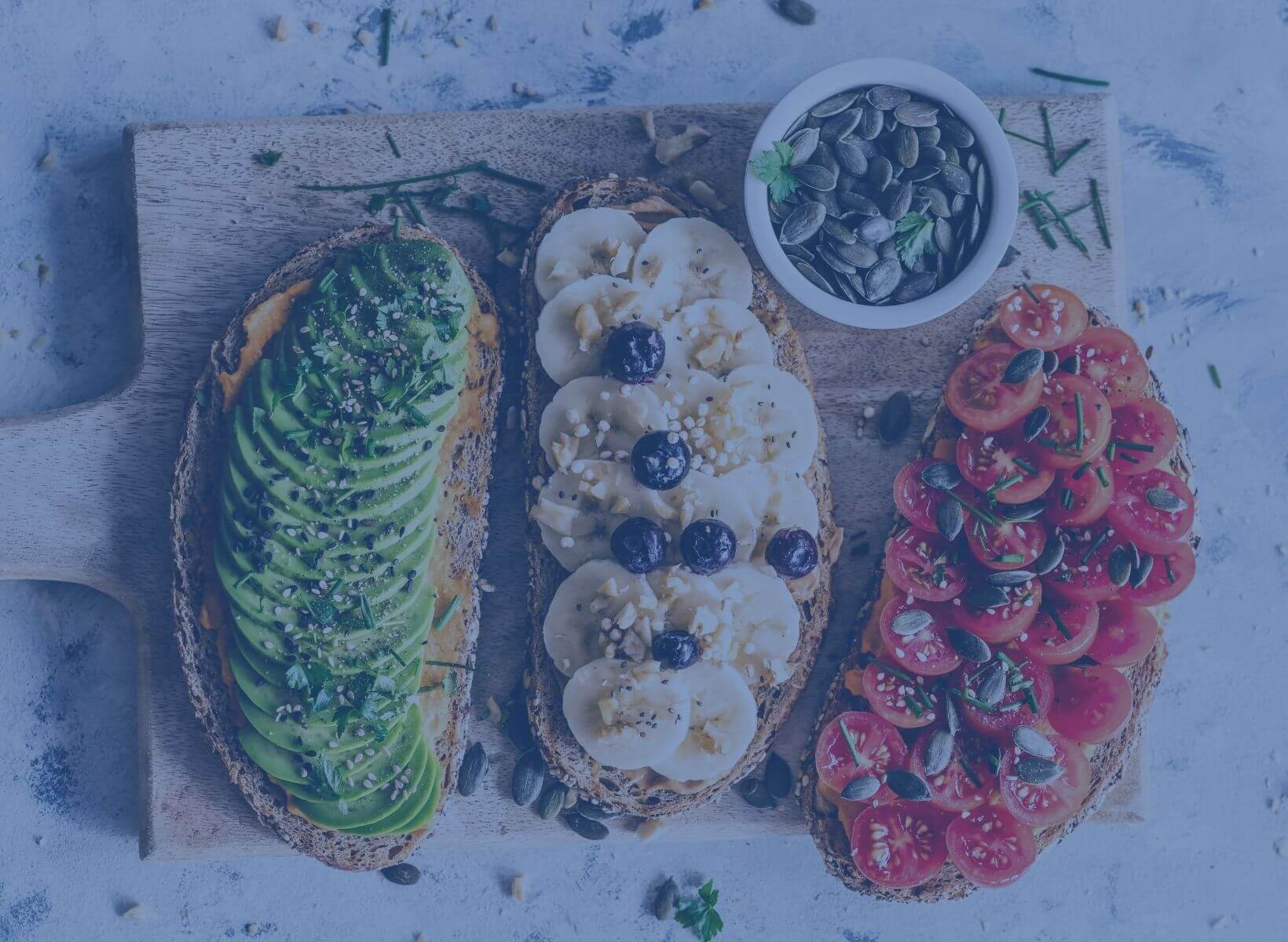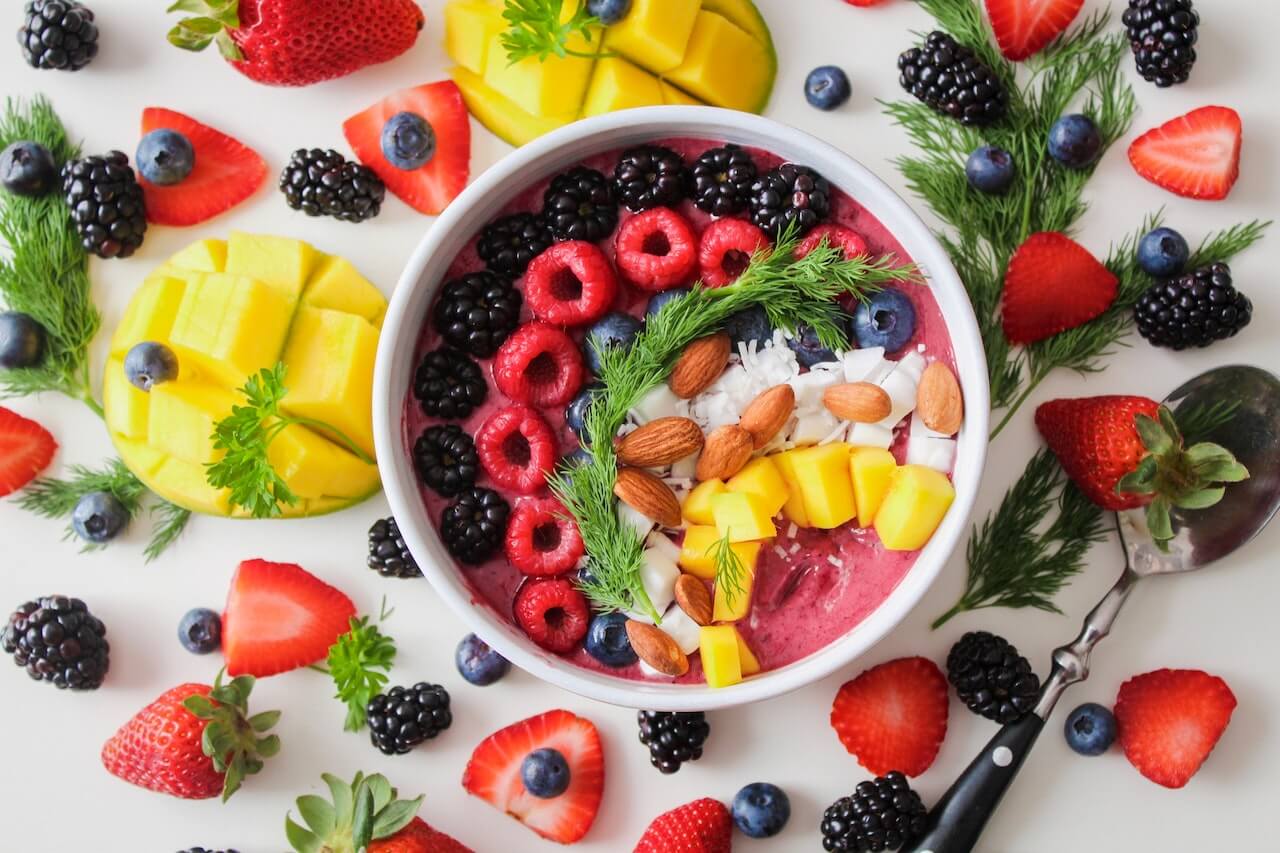Most health professionals agree that fiber is a must-have in your diet, yet many people don't eat enough. Fiber is linked with many positive health outcomes, from blood sugar balance to chronic disease risk reduction.1
Fiber is a type of carbohydrate, so getting enough fiber can feel like a challenge for people following a low-carb diet or for those just being mindful of how many carbs they eat since whole grains are a significant source of fiber for many people.
The good news is that there are plenty of low-carb, high-fiber foods for you to choose from. Plus, fiber-rich carbs will help keep you feeling full and satisfied without the blood sugar spikes that can happen after eating refined or sugary high-carb foods.
Soluble vs. Insoluble Fiber
There are two main types of fiber: soluble and insoluble.
Soluble fiber attracts water into your gut, forming a gel-like substance that your gut bacteria ferment once it reaches your large intestine. Insoluble fiber stays intact as it moves down the digestive tract.
Both fiber types are supportive for health, but soluble fiber appears especially helpful for blood sugar and glycemic control.2 You can find both types of fiber in many types of plant-based foods, some are higher-carb (like oats, beans, or whole grains), but there are also plenty of lower-carb fruits and vegetables that contain both.
Why Are Fiber-Rich Carbs so Important for Blood Sugar Balance?
Before diving into the best high-fiber foods, it helps to understand why fiber is so essential for blood sugar balance and overall health.
Fiber is a type of carbohydrate that the body can't digest. Unlike refined or processed carbs, fiber doesn't usually lead to blood sugar spikes. In fact, it usually has the opposite effect. Fiber slows down the absorption of other nutrients, which helps to keep blood sugar levels stable.3
<p class="pro-tip">Read more about the benefits of stable blood sugar</p>
Fiber is also crucial for gut health. It helps to keep things moving along and prevents constipation.4 But even more, fiber is essential for a healthy gut microbiome.5 It's like the fuel that helps your beneficial gut bacteria thrive.
Your gut microbiome consists of trillions of tiny microbes that play a vital role in everything from immunity to mental health. Specific strains of gut bacteria are linked to healthy blood sugar and insulin levels.6 So, if you're looking to maintain healthy blood sugar levels, a healthy gut should be part of your wellness plan.
<p class="pro-tip"><strong>Learn more about </strong> <a href="/blog/fiber-for-metabolic-health">why fiber is good for metabolic health</a>.</p>
Is it Possible to Eat Enough Fiber on a Low-Carb Diet?
Yes, it is possible to get enough fiber on a low-carb diet. In fact, many high-fiber foods are also low in carbs, including vegetables, fruits, nuts, and seeds. The key is to focus on eating whole, unprocessed foods naturally high in fiber.
Often low-carb diets use net carbs, which means you subtract the grams of fiber from the total grams of carbs. Since fiber doesn't impact blood sugar levels like other carbs do, it gives more flexibility.
<p class="pro-tip">Learn about everyday foods that stabilize blood sugar</p>
For example, if a food has 20 grams of carbs and 14 grams of fiber, the net carbs would be six. This is a way to ensure you're getting enough fiber if you are trying to keep your carb intake low.
Whether you are eating low-carb or just want to include more fiber in your diet, here are some of the best high-fiber, low-carb foods.
{{mid-cta}}
Top 17 Low-Carb, High-Fiber Foods
1. Walnuts. Walnuts are a great source of healthy fats, protein, and fiber. Studies link walnuts to better brain health and lower levels of inflammation.7
One ounce of walnuts (about a handful) contains four grams of carbs and two grams of fiber. Eat them as a snack, throw them on top of a salad, or use them to make homemade pesto.8
2. Chia seeds. Chia seeds are tiny black seeds that pack a big nutritional punch. They're loaded with fiber, protein, and healthy omega-three fatty acids.9 Chia seeds are also a great antidote to constipation because they absorb water and help keep things moving along.
One ounce has twelve grams of carbs and ten grams of fiber.10 Add them to smoothies, oatmeal, or yogurt. You can even make chia pudding by soaking them in almond milk overnight.
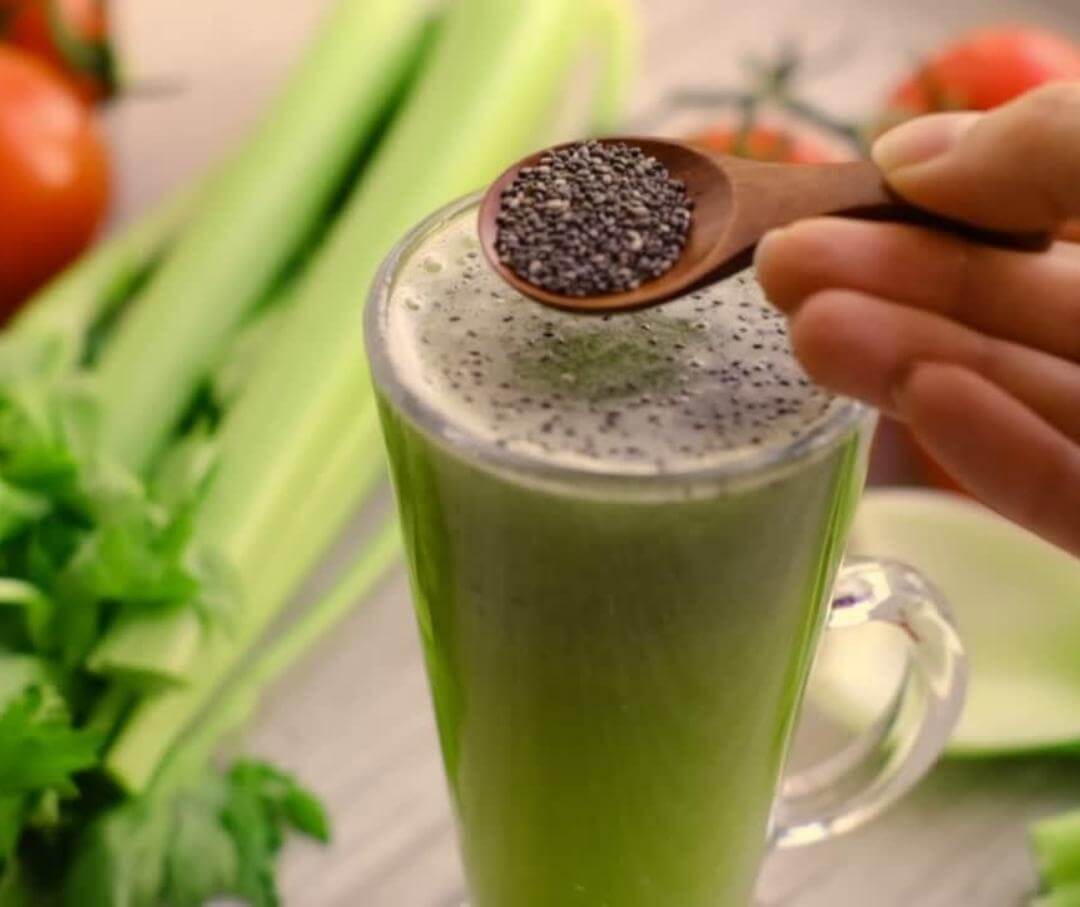
3. Raspberries. Raspberries are a delicious summer berry that's also packed with nutrients. The bright colors in raspberries come from antioxidants, which can help protect your cells from damage.11
One cup of raw raspberries contains fifteen grams of carbs but eight grams of fiber. They make a delicious snack, especially when paired with nuts or seeds for extra fiber. But you can also add them to smoothies, yogurt, or oatmeal
4. Brussels sprouts. These little green veggies are often overlooked, but they're making a comeback. Brussels sprouts also contain sulforaphane, a compound that may reduce cancer risk.12
One cup of raw brussels sprouts has eight grams of carbs and three grams of fiber.13 Think you don't like brussels? Try baking them with some Parmesan cheese. You might be surprised at how delicious they are.
5. Broccoli. Broccoli is a versatile vegetable that can be eaten raw, cooked, or steamed. They are part of the brassica family, which includes veggies like cauliflower and kale. Brassicas contain unique compounds that may help protect against cancer.14
One cup of chopped broccoli has six grams of carbs and two grams of fiber.15 Broccoli goes well with just about everything. Try roasted with olive oil and sea salt or steamed and topped with cheese.
6. Cauliflower. Cauliflower became the queen of the low-carb veggies because it's so versatile. While no one can argue that cauliflower is exactly the same as pizza dough, it can be a delicious substitute in the right recipe.
One cup of chopped cauliflower has five grams of carbs and two grams of fiber.16 Cauliflower can be used to make rice or pizza crust and even secretly added to smoothies to make them creamier.
7. Avocados. Avocados are often touted for their healthy fat but also contain fiber.17 Plus, they're a good source of vitamins C and E.
One California avocado has twelve grams of carbs and nine grams of fiber. Eat them as a snack with some sea salt, top them on a salad, or use them to make guacamole.
8. Spinach. Spinach is a nutrient-rich leafy green that's low in calories and high in fiber. Studies link spinach to a lower risk of heart disease and diabetes.18
One bunch of raw spinach has twelve grams of carbs and seven grams of fiber.19 You can eat spinach raw in a salad or cook it and add it to just about anything.

9. Kale. Kale is another nutrient-rich leafy green that's great for adding to salads or sautéing as a side dish. Don't forget about kale chips, a delicious and easy-to-make snack.
One cup of cooked kale has six grams of carbs and six grams of fiber.20 Kale can be eaten raw or cooked. If you think you don't like kale, try massaging it with a bit of olive oil and lemon juice to make it more tender.
10. Blackberries. Blackberries are a sweet and nutritious summer fruit that's perfect for adding to yogurt or eating on their own, and they're also a good source of fiber.
One cup of blackberries has fourteen grams of carbs and eight grams of fiber.21 Blackberries make a great topping to yogurt or are delicious on their own.
11. Flax seeds. Flax seeds are a great source of fiber, protein, and healthy omega-three fatty acids. Flax seeds are excellent for blood sugar control and have been shown to lower cholesterol.22
One tablespoon of flax seeds has three grams of carbs and three grams of fiber.23 Flax seeds are easily added to smoothies, yogurt, or oatmeal, and flax eggs are a great vegan alternative to regular eggs.
12. Radishes. Radishes are crunchy root vegetables often used as a garnish or in salads. They are also a part of the brassica family, like kale or broccoli but don't get as much attention.
A half-cup of sliced radishes has two grams of carbs and one gram of fiber.24 Radishes can be eaten raw, roasted, or pickled. They make a great addition to salads and sandwiches.
13. Cabbage. Cabbage is a leafy green vegetable often used in slaws or as a wrap for other ingredients. It's filled with other nutrients like vitamin C, and purple cabbage contains anthocyanins that have been linked to heart health.25
One cup of raw, chopped cabbage has five grams of carbs and two grams of fiber.26 You can eat cabbage raw or cooked, and cabbage can be used in various dishes like sauerkraut, coleslaw, stir-fries, and soups.
14. Blueberries. Blueberries are one of the most well-studied berries for health, including a lower risk of heart disease, cancer, and cognitive decline.27
One-half cup of blueberries contains eleven grams of carbs and two grams of fiber.28 Blueberries make an easy on-the-go snack, but you can also add them to any dish to boost the nutrient value.
15. Artichoke. Artichokes are a unique vegetable often eaten as an appetizer or side dish. The part of the artichoke we eat is actually a flower and contains a lot of vitamin C.
One medium artichoke has thirteen grams of carbs and seven grams of fiber.29 If you've never made artichokes before, steaming them is the simplest way to cook them, but you can also bake them and serve them with your favorite dipping sauce.
16. Asparagus. Asparagus is a nutrient-rich vegetable that can be grilled, roasted, or steamed. They are a nutrient-dense food (meaning they contain many vitamins and minerals) but are also very low in calories.
One cup of asparagus has five grams of carbs and three grams of fiber.30 You can eat asparagus on its own or chop it and add them to salads, egg dishes, or stir fry.
17. Coconut. Coconut is a versatile ingredient that can be used in sweet or savory dishes, and it's one of the only plant-based sources of saturated fat but is also high in fiber.
One cup of shredded coconut has twelve grams of carbs and seven grams of fiber.31 You can add shredded coconut to smoothies or yogurt or use it in place of breading for baked chicken or fish.
You can use this extensive list of low-carb, high-fiber foods to build a shopping list full of options to increase fiber intake. Whether you're looking for snacks, side dishes, or simple ways to add more fiber to your meals, this list has you covered. Try to mix and match different food groups to get the most benefit and variety of nutrients.
<p class="pro-tip">Read next: The Ultimate Guide to Low-Sugar Foods</p>
- Item 1
- Item 2
- item 3
Topics discussed in this article:
References
- Barber, T. M., Kabisch, S., Pfeiffer, A., & Weickert, M. O. (2020). The Health Benefits of Dietary Fibre. Nutrients, 12(10), 3209. https://doi.org/10.3390/nu12103209
- Chandalia, M., Garg, A., Lutjohann, D., von Bergmann, K., Grundy, S. M., & Brinkley, L. J. (2000). Beneficial effects of high dietary fiber intake in patients with type 2 diabetes mellitus. The New England journal of medicine, 342(19), 1392–1398. https://doi.org/10.1056/NEJM200005113421903
- Barber, T. M., Kabisch, S., Pfeiffer, A., & Weickert, M. O. (2020). The Health Benefits of Dietary Fibre. Nutrients, 12(10), 3209. https://doi.org/10.3390/nu12103209
- Woo, H. I., Kwak, S. H., Lee, Y., Choi, J. H., Cho, Y. M., & Om, A. S. (2015). A Controlled, Randomized, Double-blind Trial to Evaluate the Effect of Vegetables and Whole Grain Powder That Is Rich in Dietary Fibers on Bowel Functions and Defecation in Constipated Young Adults. Journal of cancer prevention, 20(1), 64–69. https://doi.org/10.15430/JCP.2015.20.1.642222222
- Myhrstad, M., Tunsjø, H., Charnock, C., & Telle-Hansen, V. H. (2020). Dietary Fiber, Gut Microbiota, and Metabolic Regulation-Current Status in Human Randomized Trials. Nutrients, 12(3), 859. https://doi.org/10.3390/nu12030859
- Gurung, M., Li, Z., You, H., Rodrigues, R., Jump, D. B., Morgun, A., & Shulzhenko, N. (2020). Role of gut microbiota in type 2 diabetes pathophysiology. EBioMedicine, 51, 102590. https://doi.org/10.1016/j.ebiom.2019.11.051
- Ros, E., Izquierdo-Pulido, M., & Sala-Vila, A. (2018). Beneficial effects of walnut consumption on human health: role of micronutrients. Current opinion in clinical nutrition and metabolic care, 21(6), 498–504. https://doi.org/10.1097/MCO.0000000000000508
- U.S. Department of Agriculture, Agricultural Research Service, FoodData Central. (2019) Retrieved May 4, 2022, from: https://fdc.nal.usda.gov/fdc-app.html#/food-details/170187/nutrients
- Kulczyński, B., Kobus-Cisowska, J., Taczanowski, M., Kmiecik, D., & Gramza-Michałowska, A. (2019). The Chemical Composition and Nutritional Value of Chia Seeds-Current State of Knowledge. Nutrients, 11(6), 1242. https://doi.org/10.3390/nu11061242
- U.S. Department of Agriculture, Agricultural Research Service, FoodData Central. (2019) Retrieved May 4, 2022, from: https://fdc.nal.usda.gov/fdc-app.html#/food-details/170554/nutrients
- Burton-Freeman, B. M., Sandhu, A. K., & Edirisinghe, I. (2016). Red Raspberries and Their Bioactive Polyphenols: Cardiometabolic and Neuronal Health Links. Advances in nutrition (Bethesda, Md.), 7(1), 44–65. https://doi.org/10.3945/an.115.009639
- Bayat Mokhtari, R., Baluch, N., Homayouni, T. S., Morgatskaya, E., Kumar, S., Kazemi, P., & Yeger, H. (2018). The role of Sulforaphane in cancer chemoprevention and health benefits: a mini-review. Journal of cell communication and signaling, 12(1), 91–101. https://doi.org/10.1007/s12079-017-0401-y
- U.S. Department of Agriculture, Agricultural Research Service, FoodData Central. (2019) Retrieved May 4, 2022, from: https://fdc.nal.usda.gov/fdc-app.html#/food-details/170383/nutrients
- van Poppel, G., Verhoeven, D. T., Verhagen, H., & Goldbohm, R. A. (1999). Brassica vegetables and cancer prevention. Epidemiology and mechanisms. Advances in experimental medicine and biology, 472, 159–168. https://doi.org/10.1007/978-1-4757-3230-6_14
- U.S. Department of Agriculture, Agricultural Research Service, FoodData Central. (2019) Retrieved May 4, 2022, from: https://fdc.nal.usda.gov/fdc-app.html#/food-details/170379/nutrients
- U.S. Department of Agriculture, Agricultural Research Service, FoodData Central. (2019) Retrieved May 4, 2022, from: https://fdc.nal.usda.gov/fdc-app.html#/food-details/169986/nutrients
- U.S. Department of Agriculture, Agricultural Research Service, FoodData Central. (2019) Retrieved May 4, 2022, from: https://fdc.nal.usda.gov/fdc-app.html#/food-details/171706/nutrients
- Jovanovski, E., Bosco, L., Khan, K., Au-Yeung, F., Ho, H., Zurbau, A., Jenkins, A. L., & Vuksan, V. (2015). Effect of Spinach, a High Dietary Nitrate Source, on Arterial Stiffness and Related Hemodynamic Measures: A Randomized, Controlled Trial in Healthy Adults. Clinical nutrition research, 4(3), 160–167. https://doi.org/10.7762/cnr.2015.4.3.160
- U.S. Department of Agriculture, Agricultural Research Service, FoodData Central. (2019) Retrieved May 4, 2022, from: https://fdc.nal.usda.gov/fdc-app.html#/food-details/168462/nutrients
- U.S. Department of Agriculture, Agricultural Research Service, FoodData Central. (2019) Retrieved May 4, 2022, from: https://fdc.nal.usda.gov/fdc-app.html#/food-details/1103120/nutrients
- U.S. Department of Agriculture, Agricultural Research Service, FoodData Central. (2019) Retrieved May 4, 2022, from: https://fdc.nal.usda.gov/fdc-app.html#/food-details/173946/nutrients
- Edel, A. L., Rodriguez-Leyva, D., Maddaford, T. G., Caligiuri, S. P., Austria, J. A., Weighell, W., Guzman, R., Aliani, M., & Pierce, G. N. (2015). Dietary flaxseed independently lowers circulating cholesterol and lowers it beyond the effects of cholesterol-lowering medications alone in patients with peripheral artery disease. The Journal of nutrition, 145(4), 749–757. https://doi.org/10.3945/jn.114.204594
- U.S. Department of Agriculture, Agricultural Research Service, FoodData Central. (2019) Retrieved May 4, 2022, from: https://fdc.nal.usda.gov/fdc-app.html#/food-details/1100610/nutrients
- U.S. Department of Agriculture, Agricultural Research Service, FoodData Central. (2019) Retrieved May 4, 2022, from: https://fdc.nal.usda.gov/fdc-app.html#/food-details/169276/nutrients
- Fang J. (2015). Classification of fruits based on anthocyanin types and relevance to their health effects. Nutrition (Burbank, Los Angeles County, Calif.), 31(11-12), 1301–1306. https://doi.org/10.1016/j.nut.2015.04.015
- U.S. Department of Agriculture, Agricultural Research Service, FoodData Central. (2019) Retrieved May 4, 2022, from: https://fdc.nal.usda.gov/fdc-app.html#/food-details/169975/nutrients
- Kalt, W., Cassidy, A., Howard, L. R., Krikorian, R., Stull, A. J., Tremblay, F., & Zamora-Ros, R. (2020). Recent Research on the Health Benefits of Blueberries and Their Anthocyanins. Advances in nutrition (Bethesda, Md.), 11(2), 224–236. https://doi.org/10.1093/advances/nmz065
- U.S. Department of Agriculture, Agricultural Research Service, FoodData Central. (2019) Retrieved May 4, 2022, from: https://fdc.nal.usda.gov/fdc-app.html#/food-details/1102702/nutrients
- U.S. Department of Agriculture, Agricultural Research Service, FoodData Central. (2019) Retrieved May 4, 2022, from: https://fdc.nal.usda.gov/fdc-app.html#/food-details/169205/nutrients
- U.S. Department of Agriculture, Agricultural Research Service, FoodData Central. (2019) Retrieved May 4, 2022, from: https://fdc.nal.usda.gov/fdc-app.html#/food-details/168389/nutrients
- U.S. Department of Agriculture, Agricultural Research Service, FoodData Central. (2019) Retrieved May 4, 2022, from: https://fdc.nal.usda.gov/fdc-app.html#/food-details/170169/nutrients




